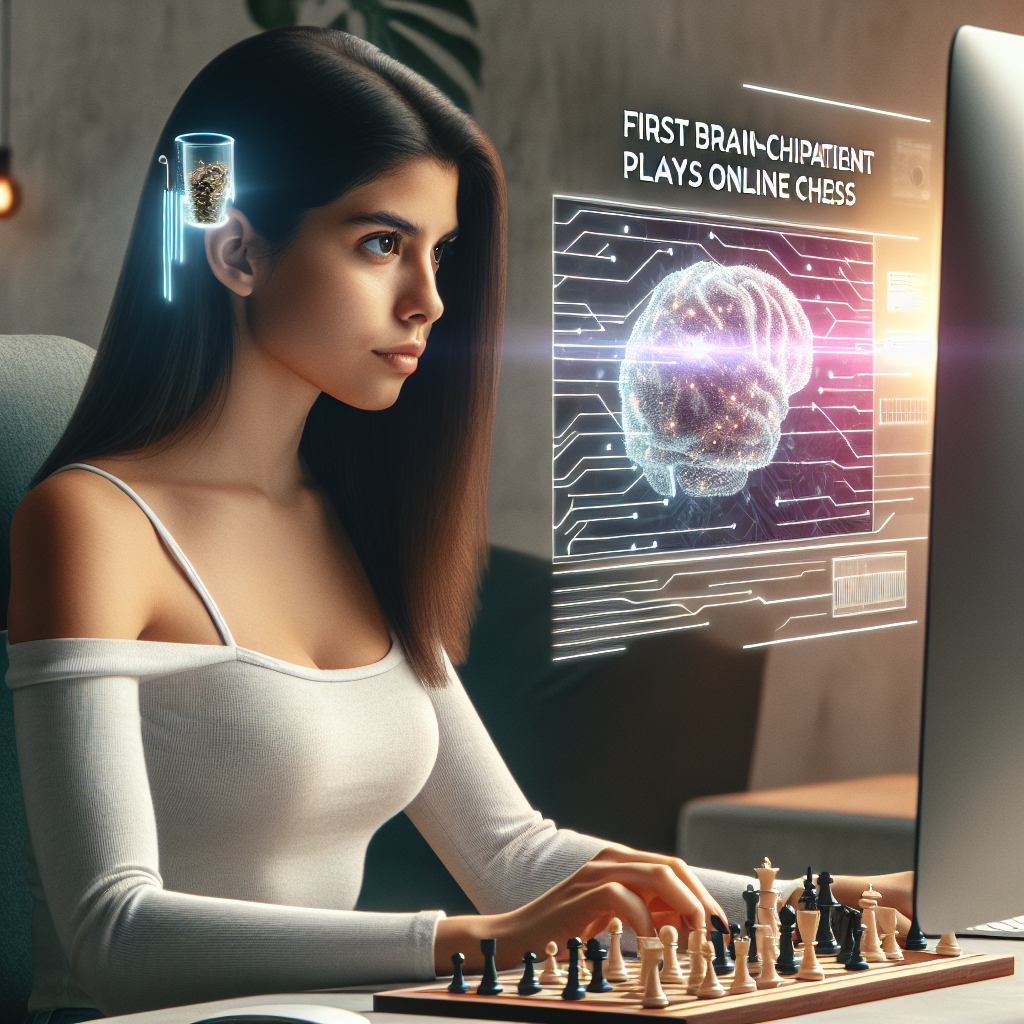
Elon Musk’s brain-chip company Neuralink has shown its first patient moving a cursor on a computer using an implanted device.
In a nine-minute livestream on X, formerly Twitter, Noland Arbaugh uses the cursor to play chess online.
Mr Arbaugh was paralysed below the shoulders after a diving accident and received the chip implant in January.
The company’s goal is to connect human brains to computers to help tackle complex neurological conditions.
“The surgery was super easy,” Mr Arbaugh said during the presentation.
Mr Arbaugh also said that he had used the brain implant to play the video game Civilization VI. Neuralink gave him “the ability to do that again and played for eight hours straight”, he said.
However, Mr Arbaugh said the new technology was not perfect and they “have run into some issues”.
Neuralink’s device, which is about the size of a one pound coin, is inserted into the skull, with microscopic wires which can read neuron activity and beam back a wireless signal to a receiving unit.
The company has also run trials in pigs and claimed that monkeys can play a basic version of the video game Pong.
Neuralink was given permission to test the chip on humans by the Food and Drug Administration (FDA) in May 2023.
Neuralink is one of a growing number of companies and university departments attempting to refine and ultimately commercialise this technology.
For example, the École Polytechnique Fédérale in Lausanne in Switzerland has successfully enabled Gert-Jan Oskam, who is paralysed, to walk just by thinking about the movements involved.
That was achieved by putting electronic implants on Mr Oskam’s brain and spine, which wirelessly communicate thoughts to his legs and feet.
Details of the breakthrough were published in the peer-reviewed journal Nature last year.
The human brain is home to around 86 billion neurons, nerve cells connected to one another by synapses.
Every time we want to move, feel, or think, a tiny electrical impulse is generated and sent incredibly quickly from one neuron to another.
Scientists have developed devices that can detect some of those signals – either using a non-invasive cap placed on the head or wires implanted into the brain itself.
The technology – known as a brain-computer interface (BCI) – is where many millions of dollars of research funding appear to be heading at the moment.
 Latest Breaking News Online News Portal
Latest Breaking News Online News Portal





